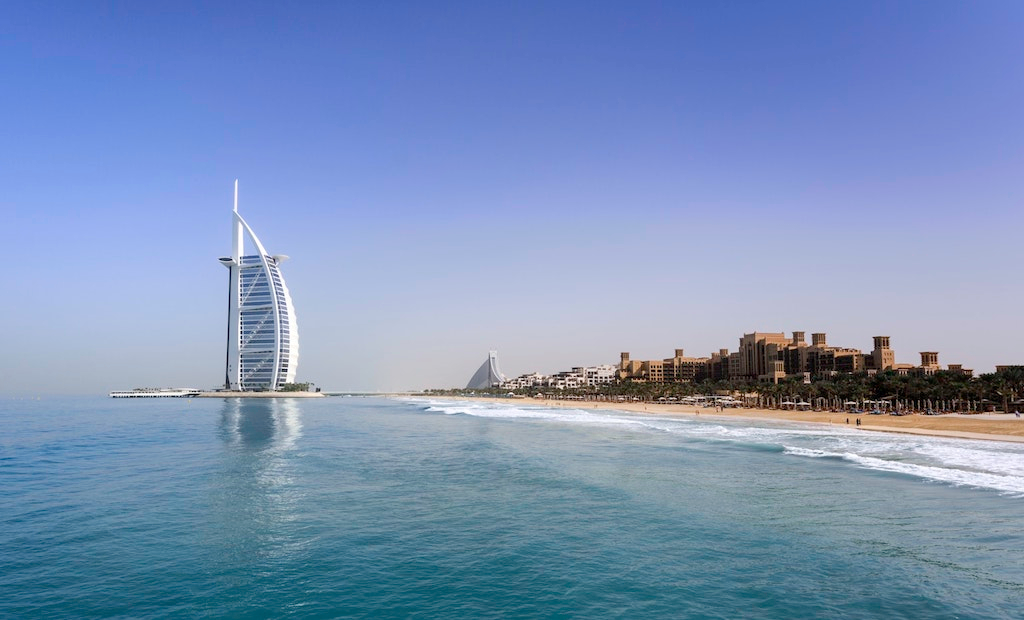The most breathtaking builds in the world

Technology has brought some great innovations over the years, but it’s also changed the way the world looks. Buildings have become more daring, to a bigger scale and crafted in all kinds of weird and wonderful shapes. Technology has allowed architects to be able to build structures that can withstand the elements of various locations. Here’s a tour of some of the most amazing feats of architecture and technology.
The Burj Khalifa: The tallest structure in the world
Known as both the Burj Khalifa and the Burj Dubai, this structure is the tallest in the world, standing at a staggering 2,722 ft tall. Starting construction in 2004 and finalising the project in 2008, many decisions had to be made to ensure that this neo-futurism structure was able to serve its purpose, acknowledging that it would be a free-standing building and understanding the hot climate it would be situated in.
The city of Dubai’s water network comes from the sea; the saltwater is changed into freshwater by desalination plants, and is then pumped all around the city, including to its skyscrapers. When the water hits the Burj, it is distributed to every corner of every floor on every level. However, with 163 floors, this can become a complicated process, which shows us just how special the Burj Khalifa actually is in terms of design.
The architects that designed the Burj Khalifa realised that using one pump for the structure’s water would risk high pressure and, therefore, potential explosions. To counter this problem, they came up with a plan to help the water flow up the building in different stages.
Water flows from the tower’s basement to a 40th-floor reservoir. This then sends the water on to 200,000-gallon tanks located all the way up the length of the skyscraper. As the water reaches the top, the water then travels back down under its own weight — it is said that 946,000 litres of water are supplied per day which also helps the building stay cool in the hot climate.
As a desert city, keeping buildings cool is vital in Dubai. Therefore, another water supply — an ice-chilled water system which is the first of its kind to be used in the Middle East — has also been implemented to enable substantial energy savings.
Apple Park, Campus 2 – energy efficiency unparalleled
You might have heard about Apple getting an office refurbishment…in the form of a whole new campus. Worth a staggering $234.7bn, the company, which is now one of the biggest on the planet, was able to invest a further $5bn into a new building and move its tremendous workforce into a circular futuristic structure. Designed by Norman Foster, the new office space, which opened in April 2017 midway through construction, is made up of 175 acres — and is even bigger than The Pentagon.
To make the building super-energy-efficient, the entire roof is crafted out of solar panels. The solar panels are capable of generating 17 megawatts of power (75% during peak daytime) and the company has aims to make the complex entirely powered by renewable energy in the future. Another four megawatts are powered through the use of biofuel and natural gas within the complex, using Bloom Energy Servers which are popular within the Californian region, with Google, Yahoo and Wal-Mart using them, too.
A priority for this build was the use of HVAC, which is natural heating, ventilation, and air control. To achieve this, the air is allowed to flow freely between the inside and outside of the building, which can help assist for nine months of the entire year — highlighting the importance of such features in the DNA of design.
Taipei 101 – the former crown-holder
This next structure is a platinum-certified Leadership in Energy and Environmental Design build. It was also the tallest building the world, prior to the Burj Khalifa’s creation. Up until 2016, the structure had the fastest elevator on the planet, which could travel from the 5th to 89th floor in 37 seconds!
Taiwan has a range of building styles and architecture, from the futuristic Tuntex Sky Tower to the traditional Fort Provintia. But what makes it so spectacular? Starting construction in 1999 and ending in 2004, the Taipei has 101 floors (if the name had not given it away) and is 1,666 ft in height — but the environmental factors that took over its design has changed the way we build for good.
Taiwan experiences many natural disasters, like typhoons and earthquakes, so buildings must be created to withstand this. When it comes to Taipei 101, the structure can withstand high winds of 134 mph, which is due to the model prioritising resistance through the use of curtain walls, protected glass and high-performance steel. The walls can provide heat and ultraviolet protection by blocking external heat by 50%.
The Taipei 101 has 36 steel columns supporting it, and eight of those are ‘mega-columns’ – columns with 10,000 pounds of concrete per inch! Within Taipei 101, there are outrigger trusses every eight floors which connect to the columns within the exterior to ensure secure resistance from probable natural disasters in and around Taiwan.
Technology is only going to bring more and more wonders and possibilities for our building designs. For example, London is set to have 13 new skyscrapers by 2026 — we know that these will be designed to uphold the ethical requirements for a modern-day structure.
The editorial unit

























Facebook
Twitter
Instagram
YouTube
RSS